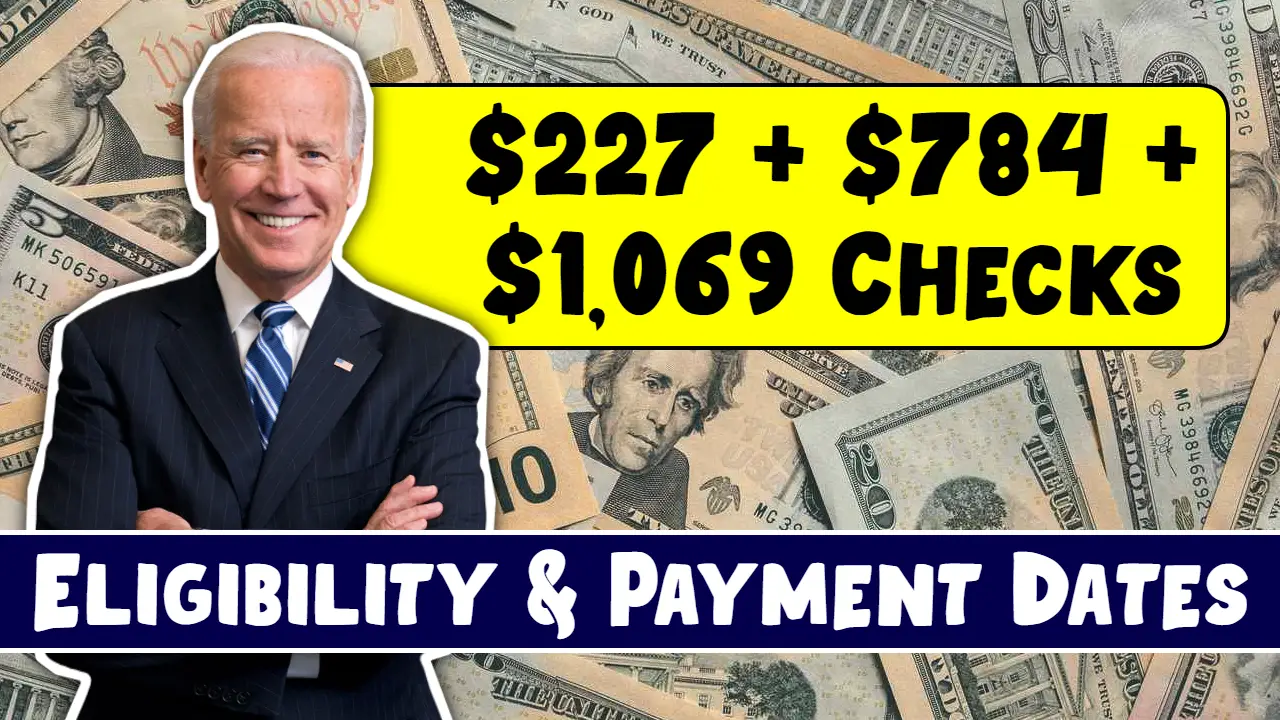The federal government is giving seniors and low-income people vital financial support in the form of benefit payments totaling $227, $784, and $1,069 every year, and its main purpose is to help recipients in managing their daily expenses and to relieve financial stress.
The SSA will monitor $227 + $784 + $1069 Checks, will be distributed by the Social Security Retirement, SSDI, and SSI programs. The goal of this program is to increase the level of living for those who are having financial difficulties so they may continue to fulfill their basic necessities and stay healthy.
$227 + $784 + $1,069 Checks
Three different payment levels are available under the SSA’s initiative: $227 + $784 + $1069 Checks, each of which has been designed to support a distinct low-income beneficiary category.
It is anticipated that those who receive these payments are going to use them to manage basic living needs like groceries, housing, and healthcare, as well as reduce financial stress and enhance their quality of life. The government is trying to ensure that those in need are able to have purchasing power in the face of growing costs by increasing SSA benefits amount.
SSA $227 + $784 + $1069 Checks Overview
$227 + $784 + $1,069 Checks For Low Income Details
Depending on their current Social Security or disability benefits, different beneficiary categories will receive different financial benefits totaling $227 + $784 + $1069 checks. People with lower monthly benefit amounts will receive an additional $227 annually, those with the middle range benefits will see a $784 increase, and higher level beneficiaries will receive a $1,069 increase.
The distribution of three different payment types are intended to adjust that varying financial requirements, ensuring that all qualified persons can obtain extra money to improve their financial situation.
Eligibility for $227 + $784 + $1069 Checks
- The SSA has specified qualifying requirements that applicants must fulfill in order to be eligible for the $227, $784, or $1,069 benefit installments.
- Beneficiaries must first be 18 years of age or older, while there are some exceptions for disabled people who can be eligible for benefits before they become adults.
- Income limits also apply, which means that in order to qualify for SSDI or SSI, a recipient’s income must be below a particular limit.
- Under the SSI and SSDI programs, which offer vital support to those unable to work due to a disability, disabled people can obtain these higher benefits.
Cost of Living Adjustment (COLA) Increase
- Through the Cost of Living Adjustment (COLA), the SSA adjusts benefit levels yearly to show inflation rates.
- A 3% COLA increase will be expected for 2025, which means that beneficiaries should expect a 3% increase in their total Social Security Retirement, SSDI, and SSI benefits.
- To combat the growing cost of living and make sure recipients maintain their purchasing power, COLA is determined using inflation rates from the third quarter of the previous year.
- This adjustment, which helps beneficiaries manage rising costs and keep up with inflation, is shown in the additional $227 + $784 + $1069 Checks.
$227 + $784 + $1069 Checks & Adjustments
- Beneficiaries will start receiving the adjusted amounts in their monthly checks in early 2025, along with the additional $227, $784, and $1,069 payments that come with the COLA increase.
- Even though the COLA can change annually based on inflation rates, the present 3% boost is expected to significantly lower the financial burdens of people who are experiencing difficulties.
- Recipients should expect to get these payments starting in the first month of 2025, which will allow them to make changes to their financial plans and more securely handle their spending.
FAQs
Are there income limits to qualify?
Yes, recipients must have an income below specific limits to qualify for SSDI or SSI.
Is there a COLA increase coming in 2025?
Yes, a 3% COLA increase is anticipated for 2025.
Who receives the $227, $784, and $1,069 checks?
People with lower benefits get $227, middle-range benefits receive $784, and higher-level beneficiaries get $1,069 annually.




![Tyson Foods Plant [Photo: Food Manufacturing]](https://southarkansassun.com/wp-content/uploads/2023/08/iStock_1185520857__1_.5e441daa51cca-600x337.jpg)








![Silverado Senior Living Management Inc. [Photo: Los Angeles Times]](https://southarkansassun.com/wp-content/uploads/2023/10/download-6-4-600x337.jpg)

![China's Wuhan Institute of Virology [Photo: Nature]](https://southarkansassun.com/wp-content/uploads/2023/09/d41586-021-01529-3_19239608-600x337.jpg)















